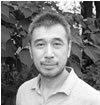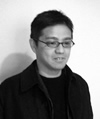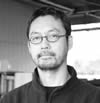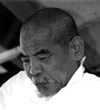JAPANESE CRAFTS
6 - 28 September
This exhibition of contemporary Japanese crafts includes work in metal, textile, fibre and ceramics. For many years, Galerie Besson has exhibited Japanese potters, but this is the first time that we have presented artists from Japan working in other media.
KOJI
HATAKEYAMA
HIROKI IWATA
NAOKO SERINO
TORU KANEKO
SHIHOKO FUKUMOTO
YASUHISA KOHYAMA
RYOJI KOIE
TATSUZO SHIMAOKA
SHOZO MICHIKAWA
KOUICHI UCHIDA
Galerie Besson is
pleased excited to be working for the first time with Katie Jones, who
has been dealing in Japanese art for twenty-five years. Originally involved
primarily with antiques, she started to introduce present-day artists
in her former Westbourne Grove premises around ten years ago and now
concentrates almost entirely on Japanese contemporary applied arts.
She currently takes part in several art fairs in America and the UK.

Koji Hatakeyama (b. 1956) was born and grew up in Takaoka, Toyama Prefecture, an area renowned for metal casting. He makes unpretentious cast bronze articles, particularly lidded boxes, which he does not necessarily intend to be functional. He has exhibited widely in Japan and abroad. His work is in the permanent collections of National Museum of Modern Art, Tokyo, the Victoria and Albert Museum, London, and the Philadelphia Museum of Art.

Hiroki
Iwata (b. 1965) is one of the very few young Japanese metal artists researching
and experimenting with enamel and in 2003 he became Director of the Japan
Enamelling Artists Association. He is also a member of the Japan Craft
Design Association. He has exhibited widely, both in Japan and abroad,
in solo and group shows and has won many prizes. He is currently a part-time
metal work instructor at the Tokyo National University of Fine Art and
Music.

Born
in Fukuoka on the island of Kyushu, fibre artist Naoko Serino (b. 1962)
graduated from Kyushu Sangyo University in 1984. She works with jute which
is so finely woven that it almost takes on the appearance of being spun,
giving a very light and airy feeling. She has exhibited extensively in
Japan, and in the last few years has also been a participant in numerous
fibre and textile exhibitions around the world.

Graduating
from Tokyo University of Fine Arts in 1988, Toru Kaneko (b. 1962) is a
silversmith specialising in objects and jewellery made in various metals.
He has been awarded numerous prizes in Japan including the Japan Crafts
Exhibition Prize and the Grand Prix at the Takaoka Craft Competition.
He has exhibited in Japan, Europe and Australia.

Shihoko
Fukumoto (b. 1945) uses subtle shades of blue and natural materials to
create luminous wall hangings and installations that convey a sensation
of deep and fragile space. Her works have evolved from the Japanese folk
tradition of shibori and indigo dyeing dating from the Heian period (794-1192).
She works with a variety of materials such as silk-covered washi, hemp
and other natural fibres.
The
traditional wood-firing techniques of historical potters from his native
Shigaraki, are evident in the work of Yasuhisa Kohyama (b. 1936). He has
played an important part in reviving the use of the traditional Japanese
"Anagama" wood fired kiln, being the first potter in the area
to build such a kiln since medieval times. Kohyama's powerful and sculptural
work has been exhibited widely in Japan and overseas including at The
Metropolitan Museum of Art in New York. Galerie Besson first showed his
work in 1992.

Considered
one of Japan’s most innovative ceramic artist’s, Ryoji Koie
(b. 1938) has exhibited internationally and taken part in numerous workshops
and conferences around the world. In 1991 he spent time in the studio
of Sebastian Blackie in Farnham (originally Henry Hammond’s studio)
preparing a body of fluid work in stoneware for an exhibition at Galerie
Besson. He returned for a second solo show in 1998, after working with
translucent porcelain in the studio of Oxford potter Margaret O’Rorke.

Tatsuzo
Shimaoka (b. 1919) studied pottery at the Tokyo Institute of Technology
and later as an apprentice to Shoji Hamada. He set up his own kiln and
workshop next to Hamada’s in Mashiko in 1953, where he has lived
and worked ever since. He was awarded the honour of Japanese Living National
Treasure in 1996. Shimaoka's work is in many prestigious collections worldwide,
including the Victoria and Albert Museum, London, and the Metropolitan
Museum of Art, New York.

Retaining
the ‘natural intentions of clay’ is the desire and goal of
potter Shozo Michikawa (b. 1953). He works in a wide range of styles and
techniques – ranging from tanka (charcoal fired) vases – to
white kohiki glazed bowls and natural ash glazed dishes. Michikawa has
exhibited worldwide, including a prestigious exhibition at the Forbidden
City, Beijing in 2005.

Born
in Nagoya in 1969, to parents running a small-scale iron works, Kouichi
Uchida grew up in an environment where there were plenty of iron scraps
and tools with which to play. He entered the Seto High School for Ceramics
in Aichi, and after graduating set up as an artist. He creates both vessels
and large scale sculptures in a wide range of styles working in ceramic
and metal. In 2000 he was chosen as one of the 38 craft artists to represent
Japan at the Tokyo National Museum of Modern Arts.